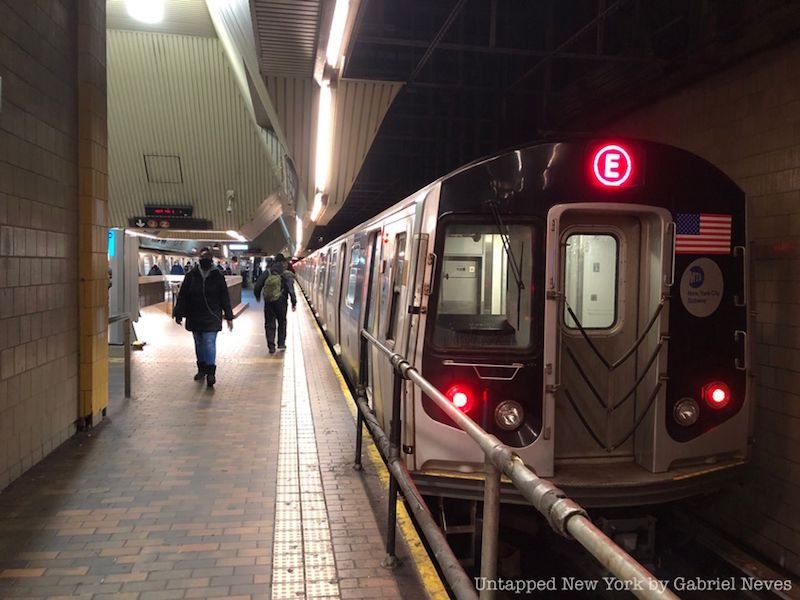
It has been a little over six months since our first installment of the “End of the Line” series on the A train, but now it has finally returned! Welcome to our second piece looking into the neighborhoods traversed by New York City’s many subway lines. Along with the endpoints, each piece will now take a look at some of the neighborhoods and historical sites that each route passes through along its trip. This particular article will be discussing the E train, which connects Jamaica, Queens to the World Trade Center in Lower Manhattan.
With service beginning in 1933 along the newly constructed Independent Subway System’s (IND) Queens Boulevard Line, the E train provided city access to commuters from deeper parts of Queens. Not only is it one of the busiest lines in the entire system, but it also offers one of the fastest ways to travel to and from Manhattan with express service along Queens Boulevard. The line runs along the local track later at night after evening rush hour to accommodate for the reduced train service. The E provides connections to some of the busiest stations in the subway system, such as Jackson Heights-Roosevelt Avenue, Port Authority Bus Terminal with access to Times Square-42nd Street, 34th Street-Penn Station, West 4th Street, and the World Trade Center.
The endpoints of the line are at Jamaica Center-Parsons/Archer and the World Trade Center, but the E did not always run this particular route. In its earlier days, trains would be connected to some segments of the IND Sixth Avenue line in SoHo and even stretch into some sections of Brooklyn. Up until 1976, E train service terminated at stations such as Church Avenue, Euclid Avenue, Lefferts Boulevard, and even Rockaway Park-Beach 116th Street in Queens. It was decided after some time that Chambers Street near the World Trade Center would be the final stop due to the addition of new bus routes and modified train service in Brooklyn.
The line has some significant issues when it comes to overcrowding and homelessness. The E along with the F trains are historically the lines with the highest ridership, and the MTA has taken certain measures to ease the pressure this causes. One such measure was implemented in 2017 by removing seats at the ends of its R-160 subway cars to allow more standing room for passengers. According to some follow-up studies, this modification has allowed for the steadier flow of passengers and has reduced overcrowding at certain stops.
Now, let’s take a look at the starting point for the E train in Jamaica!





